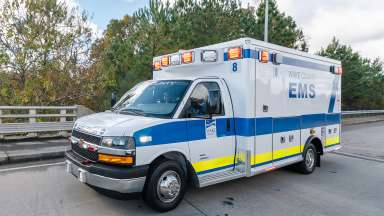Raleigh residents may soon notice an ambulance responding to a call without using its lights and siren.
Studies have shown that in some cases, turning off the lights and siren during EMS response is the safest choice for everyone.
- Lights and sirens will still be used in the most time-critical situations.
- Lights and sirens will mean a medical intervention.
- Excessive use is linked to increased traffic accidents involving emergency vehicles. They can lead to injuries and fatalities of patients, EMTs, and the public. (The lights and sirens can confuse drivers who don’t know what to do.)
In case an emergency vehicle with lights and sirens is on the road with you, learn how to help emergency vehicles pass you on the road.
911 Call Response Changes
Responding to emergencies while reducing lights and siren use requires updating the 911 call response plan.
According to the new call response plan:
- The most appropriate resource will be dispatched first for each call.
- Response may include an ambulance, a fire truck, police, a nurse call-line, or another resource depending on the situation.
- First responders can request additional help as more information becomes available.
Director Dominick Nutter of the Raleigh-Wake Emergency Communications Center says the Center fully supports the changes.
“Our staff play a critical role in ensuring that each call receives the most appropriate response,” he says. “That can mean dispatching an ambulance, a fire unit, or connecting the caller with a nurse navigation line. By working together to prioritize the right care at the right time, we’ll improve how we respond to emergencies and make our roads safer for responders and the public.”
Community Meetings
Wake County is holding several public meetings to provide more information. Stay tuned for updates on them by visiting wake.gov.
